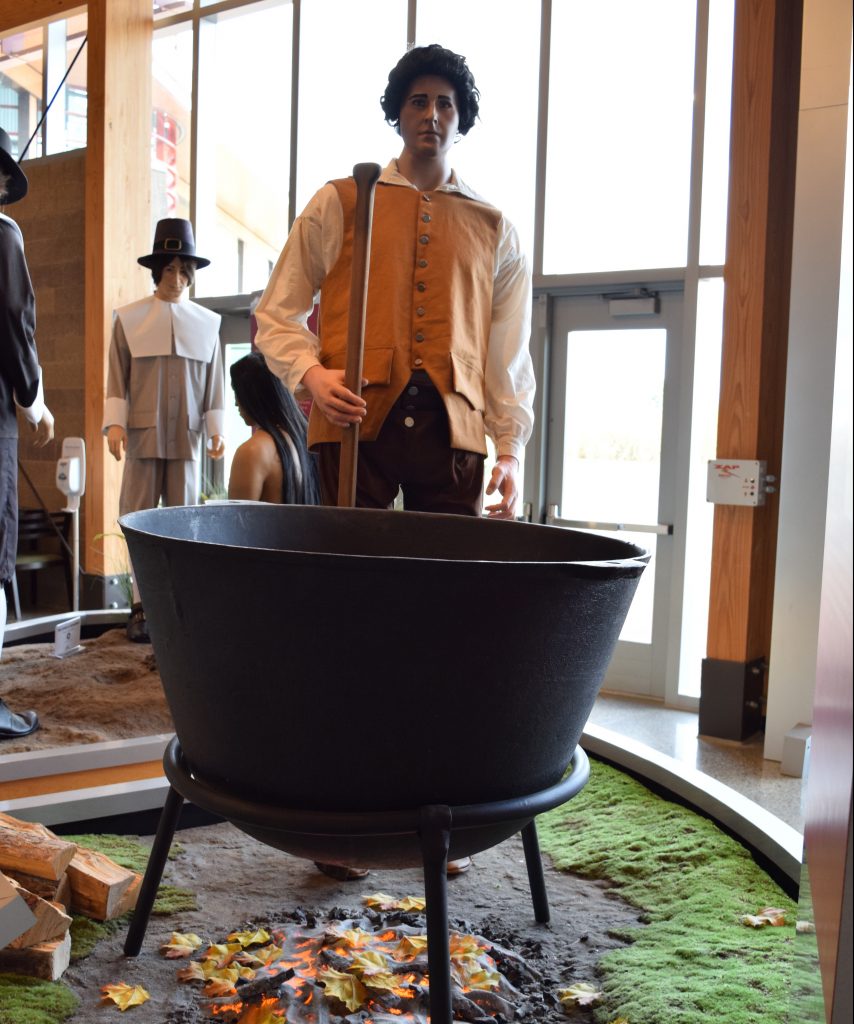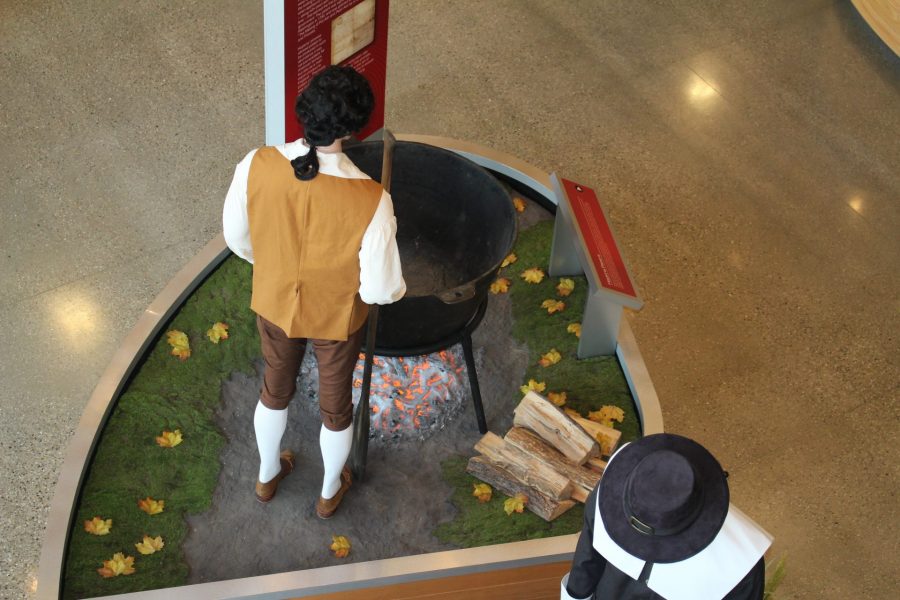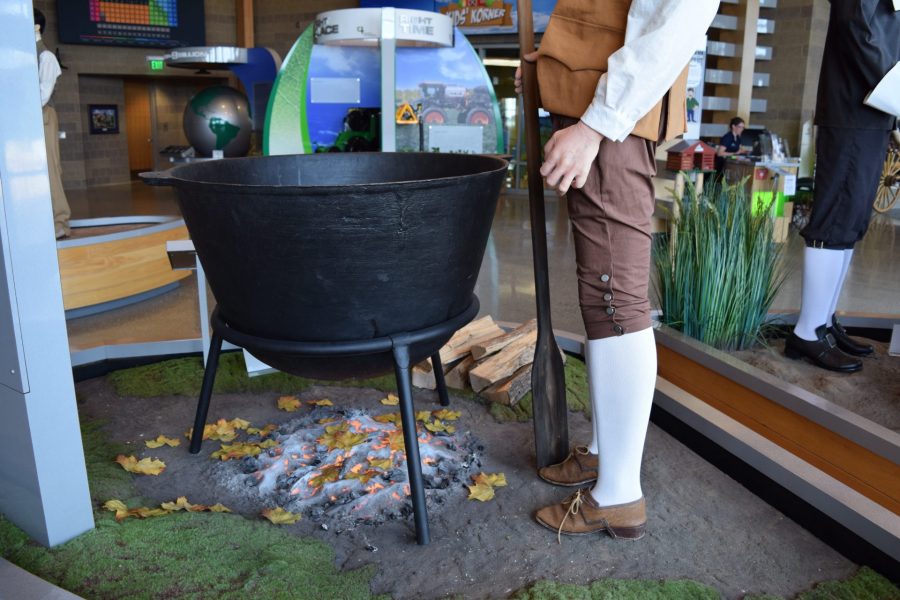Thanks to potash, the history of fertilizer is tied up with the history of U.S. patents. In the late 1700s, the first U.S. patent was granted to Samuel Hopkins of Philadelphia. The patent was for a new and improved approach to producing potash and pearlash.
Why was that important? Well, potash is a major component of fertilizers. It contains high amounts of potassium, which is one of the most important plant nutrients. Without enough potassium, crops won’t grow.
Before modern agricultural processes, people made potash by boiling wood ash in large pots. Samuel Hopkins’ process involved burning ash a second time in a special furnace before boiling it. This produced higher-quality potash, which meant better results for farmers.
We created a museum display about Hopkins’ patent for AgroLiquid’s IQhub. This exhibit allows visitors to observe the process that Hopkins would have used to make potash for fertilizer. The mannequin (representing Hopkins himself) prepares to stir the boiling mixture in his iron pot.
Informational text and a photo of Hopkins’ actual patent tells visitors about the patent. Focused audio that can only be heard directly by the exhibit provides additional information about Hopkins and his patent.





